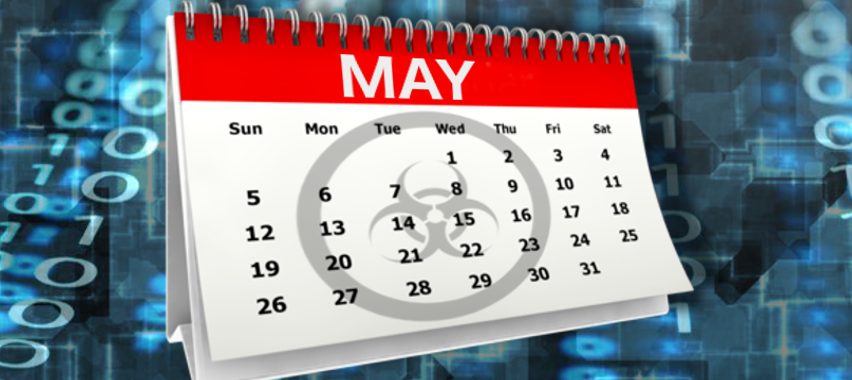Nearly a month has passed since the first reports about WannaCry ransomware started flooding the Internet. And there were definitely some intense few weeks. Home users, businesses and even major organizations such as hospitals or telecommunication services have been losing large quantities of data and money to this parasite. Some had to suspend or limit their daily operations because of the attacks. For now, the initial wave of WCry attacks seems to have ceased, so we can look back on it in a more of structured manner and highlight the things that have been causing the most headache to the online community.
For a large portion of May after the virus showed up, WCry has been peaking rapidly and infecting thousands of devices a day. Reports about new targeted countries would also emerge daily, causing panic across the world. Over the span of a month, the malware managed to infect over 400,000 machines, making the history as the biggest ransomware attack to this day. The virus would probably have not made it this far if not for the ETERNALBLUE exploit which the hacker group called Shadow Brokers have leaked from the NSA’s secret servers earlier in April. The exploit specifically targeted MS17-010 vulnerability found Windows operating systems. In particular, 98 percent of the affected machines were outdated Windows 7 versions which no longer receive security patches from Microsoft. This security hole is still a major threat for the users who have are using an expired software or have not updated their Windows 10 to the latest version. Undoubtedly, ransomware will thrive as long as the criminals will be able to take advantage of such vulnerabilities.
Despite the fact that security experts managed to come up with a killswitch and decryptor which partially immobilized WannaCry, the virus success has spiked a new wave of interest in ransomware development. Experts say, that spin-off versions such as XData or WannaCry 2.0 are just a beginning and the grim legacy this nasty cyber infection will continue in the future. Thus, it is important to brace ourselves for the potential attacks, protect our devices with professional security software, regularly look for system updated and keep backups.

